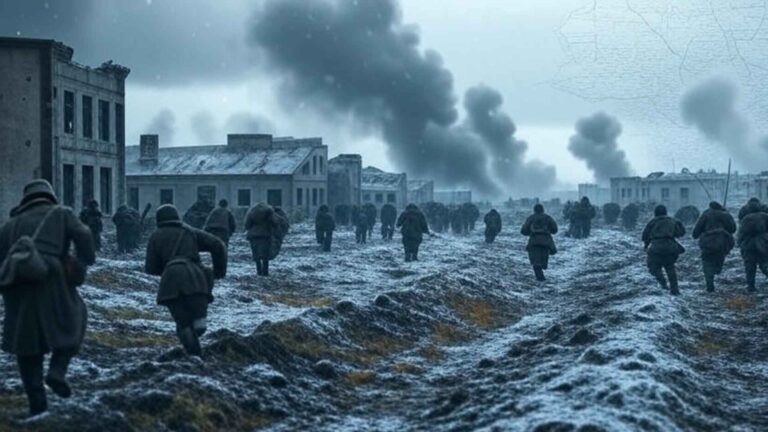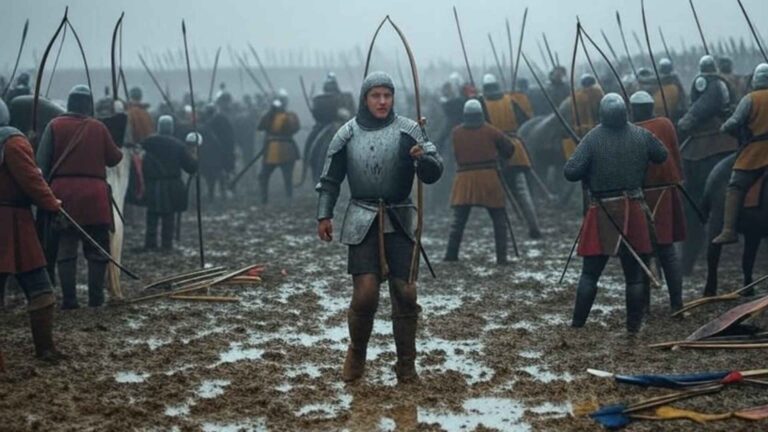Battle of the Bulge: Causes, Casualties, Significance, and Who Won
In late 1944, World War II was still going on. The Allies had won in France after the D-Day attack. Many thought the war was almost over. But on December 16, Germany made a surprise attack. Over 200,000 German soldiers attacked in the snowy Ardennes Forest.
Why Was It Called Battle of the Bulge?
The American lines were weak there. The Germans pushed forward and made a bulge in the front line. That’s why it’s called the Battle of the Bulge.
The battle lasted for 41 days. It was very cold, and the fighting was hard. Many soldiers died. But the American soldiers were brave and strong. They stopped the Germans. In the end, the Allies won. This battle was a big step toward winning the war. It showed the world the power of freedom over fear.
Must Read: The Battle of Agincourt: How 6,000 Englishmen Crushed a French Army of 30,000
Who Won The Battle of the Bulge
The Allies won the Battle of the Bulge. Although the Germans launched a surprise attack and gained ground at first, they failed to reach their goals. The U.S. and Allied forces held strong, slowed the German advance, and pushed them back by early February 1945.
This battle caused massive losses for Germany—men, tanks, and air power they couldn’t replace. After the defeat, Germany’s ability to defend itself in the West was shattered. The Allies regained momentum and continued their advance into Germany, leading to the final Allied victory in Europe just months later.
Battle of the Bulge Casualties
The Battle of the Bulge was the bloodiest battle for the United States in World War II. The U.S. had about 70,000 to 75,000 casualties, depending on how the losses were counted. This included soldiers killed, wounded, missing, or captured. British forces had over 1,400 casualties.
German losses were also very high—between 90,000 and 110,000, with some estimates going even higher. Both sides lost many tanks and other vehicles. These heavy losses weakened the German army badly, and they could not replace their men or equipment. The battle slowed down the Allies for a short time, but in the end, the Germans suffered much more.
Must Read: Battle of Stalingrad: Casualties, Importance, Why Happened and Who Won
Why did the Battle of the Bulge Happen?
The Battle of the Bulge happened because Germany launched a surprise attack in a desperate attempt to stop the advancing Allied forces in late 1944. After losing ground following the Allied invasion of Normandy, Hitler wanted to split the British and American armies, recapture the Belgian port of Antwerp, and force a peace deal on the Western Front.
The Germans chose the Ardennes region for their attack because it was heavily wooded and lightly defended, making it an unexpected location. The goal was to create confusion, break the Allied lines, and regain control—but the plan failed.
What Was Significance of Battle of Bulge in World War II
The Battle of the Bulge was very important in World War II. It was Germany’s last big attack in the West. It began in December 1944. Germany wanted to surprise the Allies, break their forces, and take the port of Antwerp. At first, they did surprise the Allies and caused many deaths. But the Allies fought back hard. The winter was very cold, and Germany ran out of fuel and supplies. This battle used up many German soldiers and weapons. After this, Germany could not stop the Allies. Just four months later, Germany surrendered. This battle helped end the war in Europe.
Battle of the Bulge Summary
The Battle of the Bulge was the last big attack by Germany during World War II. It began on December 16, 1944, and lasted about 41 days, ending on January 25, 1945. The battle took place in the Ardennes Forest in Belgium.
Germany wanted to surprise the Allied forces, split them apart, and capture the important port city of Antwerp. Over 200,000 German soldiers attacked a weak spot in the Allied line. This pushed the line forward and made a “bulge” on the map—giving the battle its name.
Must Read: What Can Be Used Against You In a Custody Case?
The weather was freezing cold, with snow and ice, which made fighting harder. The town of Bastogne became famous because U.S. soldiers were surrounded but refused to give up. After weeks of tough fighting, the Allies pushed back the Germans and won the battle.
It was one of the longest and bloodiest battles for the U.S. in the war. The German army lost many troops and weapons, which helped lead to their defeat in Europe a few months later.
Conclusion
The Battle of the Bulge was a big and very hard fight in World War II. It happened because Germany wanted to stop the Allies from coming into Germany. The battle was long, cold, and deadly. Many soldiers died on both sides. But in the end, the Allies won. This win was very important. It weakened the German army and helped bring the war in Europe closer to an end.
Must Read: Oldest Religions in the World- A Comprehensive and Detailed Overview







